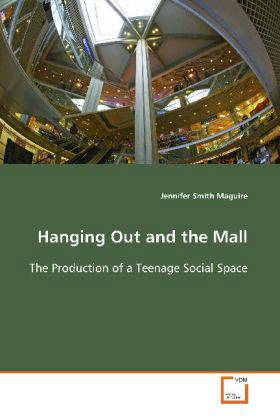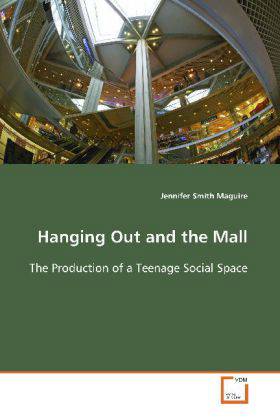
Door een staking bij bpost kan je online bestelling op dit moment iets langer onderweg zijn dan voorzien. Dringend iets nodig? Onze winkels ontvangen jou met open armen!
- Afhalen na 1 uur in een winkel met voorraad
- Gratis thuislevering in België vanaf € 30
- Ruim aanbod met 7 miljoen producten
Door een staking bij bpost kan je online bestelling op dit moment iets langer onderweg zijn dan voorzien. Dringend iets nodig? Onze winkels ontvangen jou met open armen!
- Afhalen na 1 uur in een winkel met voorraad
- Gratis thuislevering in België vanaf € 30
- Ruim aanbod met 7 miljoen producten
Zoeken
Hanging Out and the Mall The Production of a Teenage Social Space
The Production of a Teenage Social Space
Jennifer Smith Maguire
Paperback | Engels
€ 48,45
+ 96 punten
Omschrijving
Lacking other spaces to call their own, many young people turn to shopping malls as sites for hanging out. However, adolescents must negotiate several obstacles that stem from their ambivalent relationship with malls, which are simultaneously welcoming (safe environments that target the teenage market) and hostile (places in which teenagers are seen as a threat to safety and order). Based on ethnographic research and interviews with teenagers and mall authorities, the book analyzes hanging out as the tactical practice of movement--as shopping, loitering, and watching the crowd--which is both facilitated and constrained by the strategies of the mall. The book examines the intersections of the commercial, controlled and potentially public setting of the mall with the interactive, consumptive and disruptive activities of adolescents, suggesting how teens temporarily transform the mall to produce a space of their own. Bringing theoretical perspectives on space and youth together with grounded, empirical research, the book will be of interest to students and researchers in the fields of Sociology and Cultural Studies.
Specificaties
Betrokkenen
- Auteur(s):
- Uitgeverij:
Inhoud
- Aantal bladzijden:
- 116
- Taal:
- Engels
Eigenschappen
- Productcode (EAN):
- 9783639099577
- Verschijningsdatum:
- 16/12/2008
- Uitvoering:
- Paperback
- Formaat:
- Trade paperback (VS)
- Afmetingen:
- 152 mm x 229 mm
- Gewicht:
- 163 g

Alleen bij Standaard Boekhandel
+ 96 punten op je klantenkaart van Standaard Boekhandel
Beoordelingen
We publiceren alleen reviews die voldoen aan de voorwaarden voor reviews. Bekijk onze voorwaarden voor reviews.











